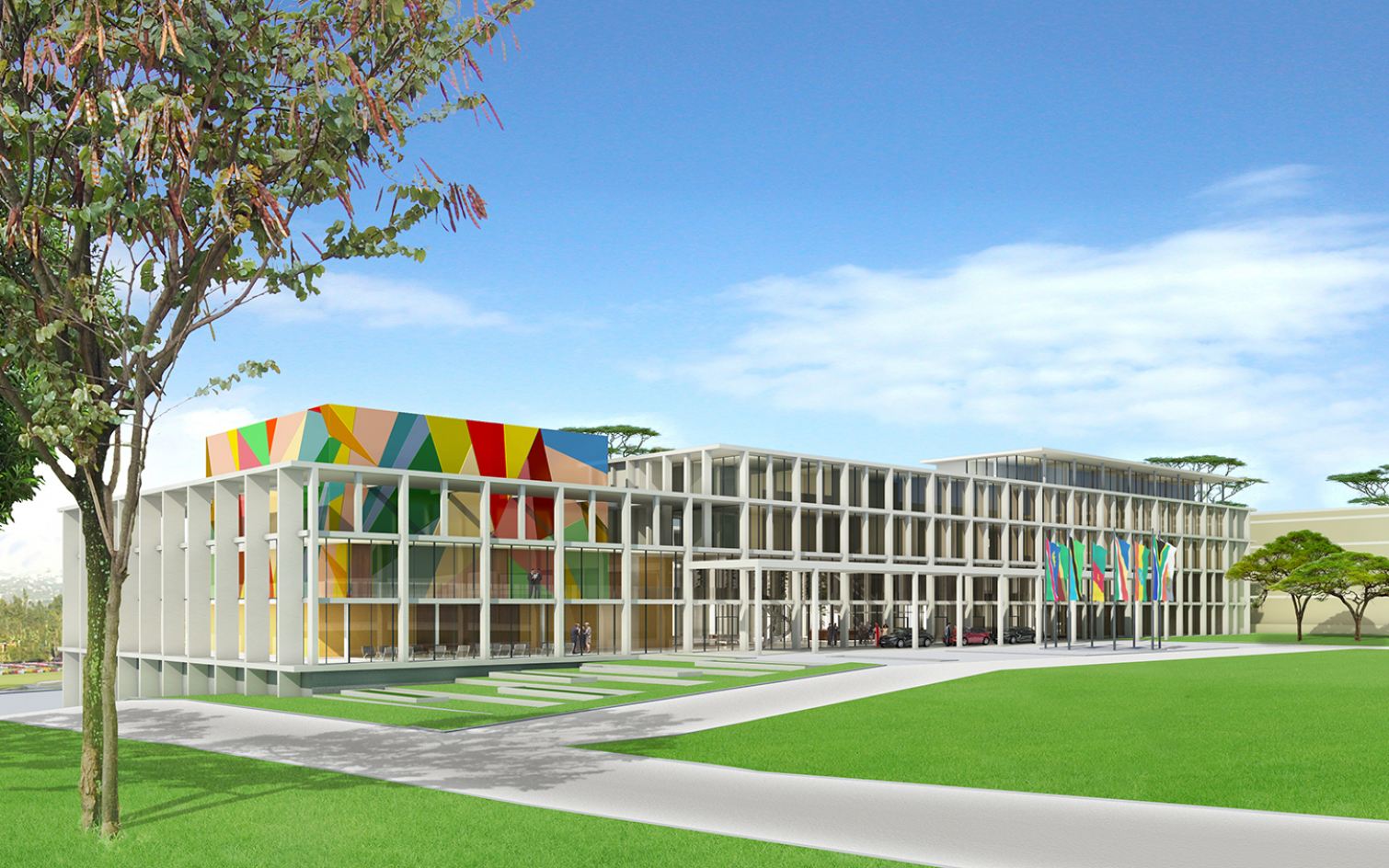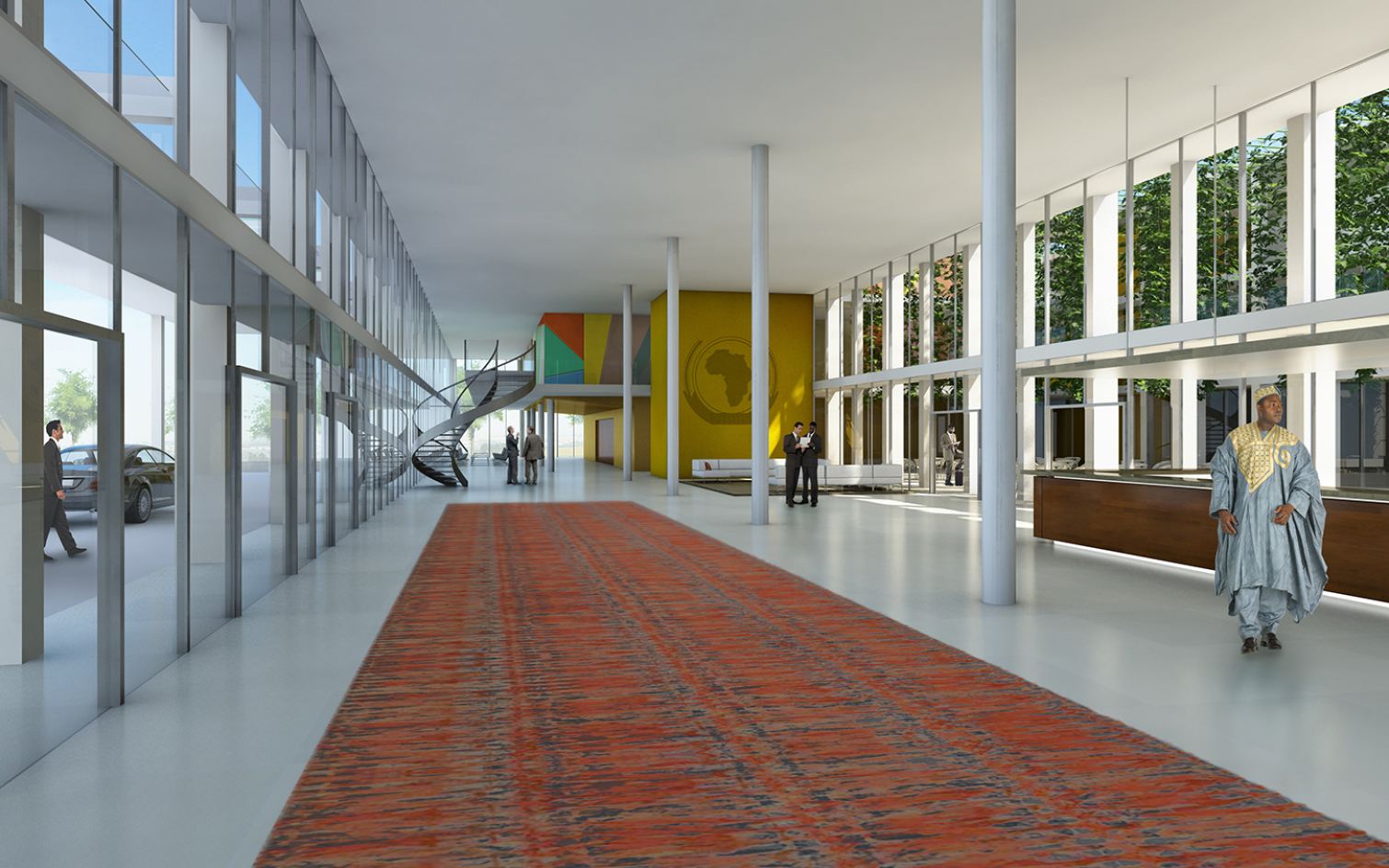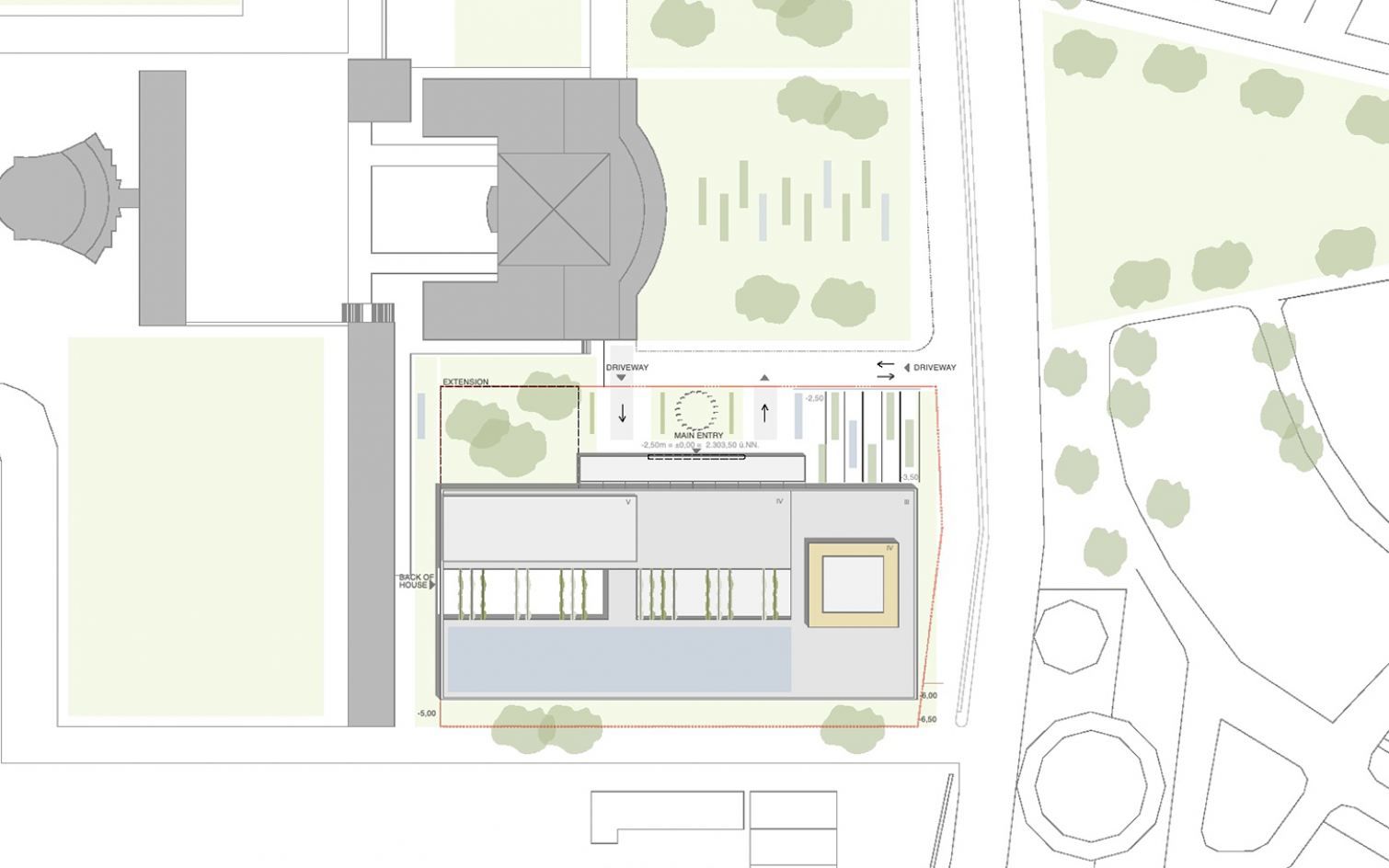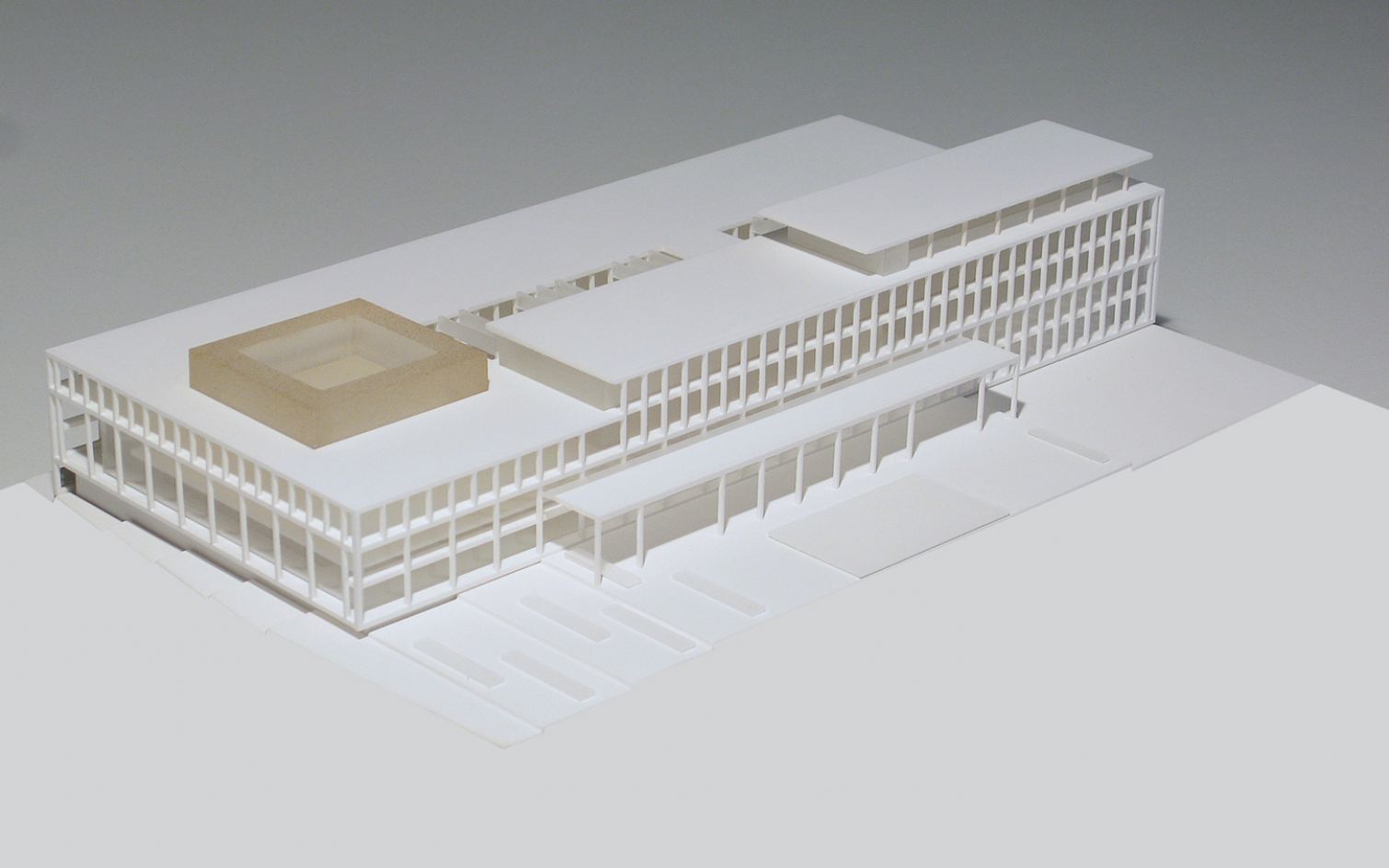Peace and Security Building of the African Union in Addis Ababa, Ethiopia
Organizer
Auswärtiges Amt vertreten durch die Deutsche Gesellschaft für Technische Zusammenarbeit (GTZ), Eschborn
Competition 2nd prize
2009
Team
Marc Ottinger, Sonja Müller
Technical Planner
Stötzer + Stötzer Landschaftsarchitekten Freibug, Ingenieurbüro Hausladen GmbH Feldkirchen, Sailer Stepan und Partner GmbH München, Müller BBM GmbH Planegg
Building data
Gross floor area 12,423 m²
The design proposed for the Peace and Security Building of the African Union, with four operational divisions for peace and security, took into account the location in the immediate vicinity of an existing parliament building and a new conference centre. Based on the typology of an antique temple, the clear rectangular construction is surrounded by a regular arrangement of columns, with a massive colourful cube structure accommodating a plenary room protruding at the top. This "disruption" in the architectural order symbolises the conflicts between the African states and identifies the place where these are negotiated. The regularity of the structure of the façade represents stability and order, signifying collaboration and peace in the African Union. A central entrance hall provides access to the plenary area and offices of the operational divisions arranged around an atrium.
The influence of typically Ethiopian climatic and geographic conditions is evident in the design of the building structure and envelope, with "low-tech" and "low-energy" featuring as key terms in the design process. The climate permits very simple constructions, surrounded by balconies made of solid concrete for shading, and supporting structures without a thermal break between interior and exterior spaces. Materials such as reinforced concrete, light-coloured natural stone, glass, metal and wood are combined using simple low-tech detail constructions, facilitating uncomplicated execution and resulting in cost-effectiveness and sustainability. The energy concept is based on minimising the introduction of heat by shading, as well as night-time cooling.
Various features promoting self-sufficiency of the building include subterranean tanks used as water reservoirs, waste water collected in a biogas facility for subsequent generation of energy, and large photovoltaic systems on the roof to ensure an uninterrupted power supply.




